TC2N, a novel oncogene, accelerates tumor progression by suppressing p53 signaling pathway in lung cancer
- PMID: 30254375
- PMCID: PMC6748156
- DOI: 10.1038/s41418-018-0202-8
TC2N, a novel oncogene, accelerates tumor progression by suppressing p53 signaling pathway in lung cancer
Abstract
The protein containing the C2 domain has been well documented for its essential roles in endocytosis, cellular metabolism and cancer. Tac2-N (TC2N) is a tandem C2 domain-containing protein, but its function, including its role in tumorigenesis, remains unknown. Here, we first identified TC2N as a novel oncogene in lung cancer. TC2N was preferentially upregulated in lung cancer tissues compared with adjacent normal lung tissues. High TC2N expression was significantly associated with poor outcome of lung cancer patients. Knockdown of TC2N markedly induces cell apoptosis and cell cycle arrest with repressing proliferation in vitro, and suppresses tumorigenicity in vivo, whereas overexpression of TC2N has the opposite effects both in vitro and in vivo. Using a combination of TCGA database and bioinformatics, we demonstrate that TC2N is involved in regulation of the p53 signaling pathway. Mechanistically, TC2N attenuates p53 signaling pathway through inhibiting Cdk5-induced phosphorylation of p53 via inducing Cdk5 degradation or disrupting the interaction between Cdk5 and p53. Moreover, the blockade of p53 attenuates the function of TC2N knockdown in the regulation of cell proliferation and apoptosis. In addition, downregulated TC2N is involved in the apoptosis of lung cancer cells induced by doxorubicin, leading to p53 pathway activation. Overall, these findings uncover a role for the p53 inactivator TC2N in regulating the proliferation and apoptosis of lung cancer cells. Our present study provides novel insights into the mechanism of tumorigenesis in lung cancer.
Conflict of interest statement
The authors declare that they have no conflict of interest.
Figures
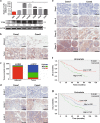

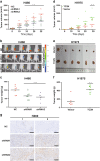
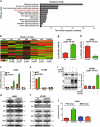
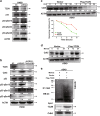
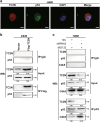


Similar articles
-
TC2N maintains stem cell-like characteristics to accelerate lung carcinogenesis by blockade of dual specificity protein phosphatase 3.Cell Biosci. 2025 Jan 23;15(1):8. doi: 10.1186/s13578-025-01348-3. Cell Biosci. 2025. PMID: 39849581 Free PMC article.
-
Selective targeting p53WT lung cancer cells harboring homozygous p53 Arg72 by an inhibitor of CypA.Oncogene. 2017 Aug 17;36(33):4719-4731. doi: 10.1038/onc.2017.41. Epub 2017 Apr 10. Oncogene. 2017. PMID: 28394340 Free PMC article.
-
p53 mediated transcriptional regulation of long non-coding RNA by 1-hydroxy-1-norresistomycin triggers intrinsic apoptosis in adenocarcinoma lung cancer.Chem Biol Interact. 2018 May 1;287:1-12. doi: 10.1016/j.cbi.2018.03.016. Epub 2018 Mar 27. Chem Biol Interact. 2018. PMID: 29596799
-
TC2N: A Novel Vital Oncogene or Tumor Suppressor Gene In Cancers.Front Immunol. 2021 Dec 2;12:764749. doi: 10.3389/fimmu.2021.764749. eCollection 2021. Front Immunol. 2021. PMID: 34925334 Free PMC article. Review.
-
The regulatory roles of p53 in cardiovascular health and disease.Cell Mol Life Sci. 2021 Mar;78(5):2001-2018. doi: 10.1007/s00018-020-03694-6. Epub 2020 Nov 11. Cell Mol Life Sci. 2021. PMID: 33179140 Free PMC article. Review.
Cited by
-
TC2N inhibits distant metastasis and stemness of breast cancer via blocking fatty acid synthesis.J Transl Med. 2024 Jan 2;22(1):6. doi: 10.1186/s12967-023-04721-3. J Transl Med. 2024. PMID: 38167440 Free PMC article.
-
Tac2-N serves an oncogenic role and promotes drug resistance in human gastric cancer cells.Exp Ther Med. 2020 Nov;20(5):113. doi: 10.3892/etm.2020.9241. Epub 2020 Sep 18. Exp Ther Med. 2020. PMID: 32989391 Free PMC article.
-
Tac2-N acts as a novel oncogene and promotes tumor metastasis via activation of NF-κB signaling in lung cancer.J Exp Clin Cancer Res. 2019 Aug 30;38(1):319. doi: 10.1186/s13046-019-1316-7. J Exp Clin Cancer Res. 2019. PMID: 31466523 Free PMC article.
-
Establishment and Validation of a Ferroptosis-Related Gene Signature to Predict Overall Survival in Lung Adenocarcinoma.Front Genet. 2022 Jan 14;12:793636. doi: 10.3389/fgene.2021.793636. eCollection 2021. Front Genet. 2022. PMID: 35096011 Free PMC article.
-
CellMemory: hierarchical interpretation of out-of-distribution cells using bottlenecked transformer.Genome Biol. 2025 Jun 23;26(1):178. doi: 10.1186/s13059-025-03638-y. Genome Biol. 2025. PMID: 40551223 Free PMC article.
References
-
- Zhang J, Gold KA, Lin HY, Swisher SG, Xing Y, Lee JJ, et al. Relationship between tumor size and survival in non-small-cell lung cancer (NSCLC): an analysis of the surveillance, epidemiology, and end results (SEER) registry. J Thorac Oncol. 2015;10:682–90. doi: 10.1097/JTO.0000000000000456. - DOI - PMC - PubMed
Publication types
MeSH terms
Substances
LinkOut - more resources
Full Text Sources
Other Literature Sources
Medical
Molecular Biology Databases
Research Materials
Miscellaneous

